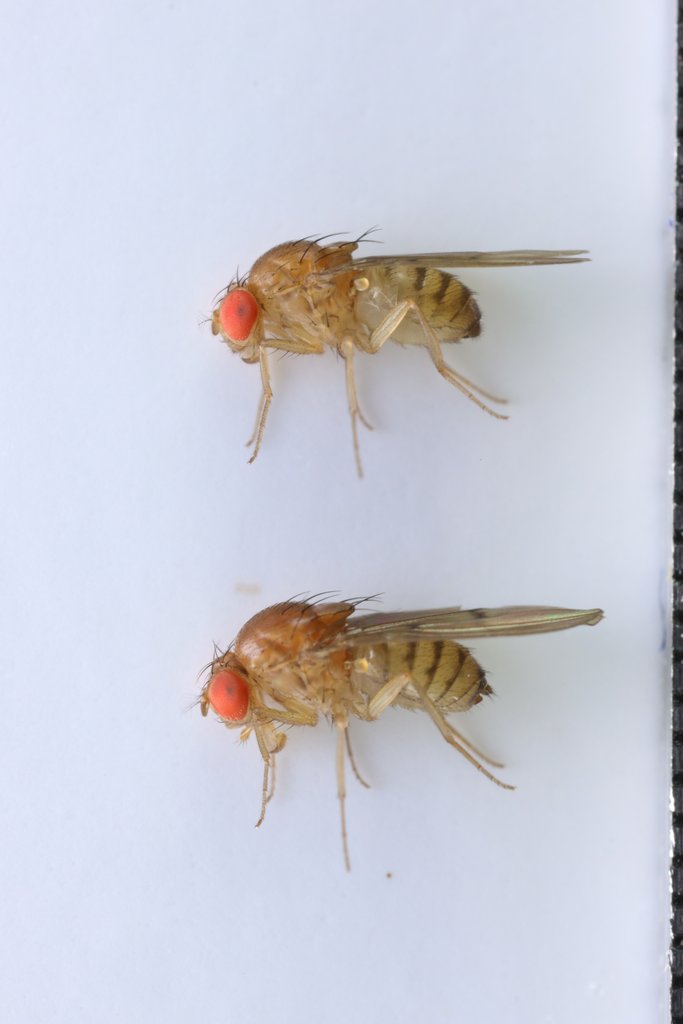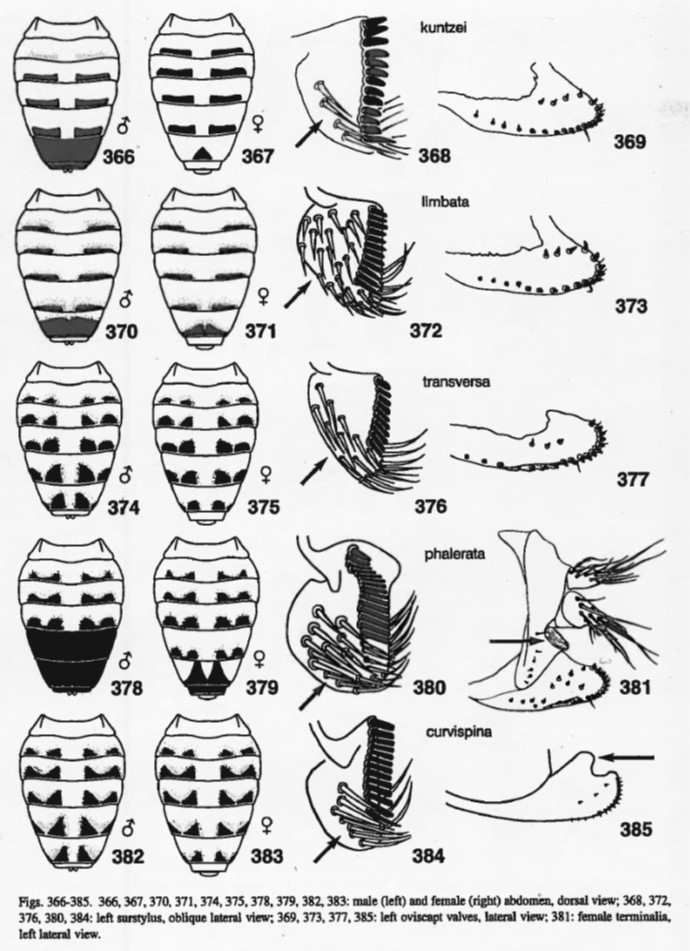Diptera.info :: Identification queries :: Diptera (adults)
|
Drosophila limbata or kuntzei
|
|
| djo |
Posted on 11-08-2021 09:21
|
|
Member Location: Edinburgh, UK Posts: 192 Joined: 16.05.11 |
Hi! These are male and female siblings (I collected their mother in south east England, aspirated from a fungus) I think they are Drosophila limbata or kuntzei. I did think kuntzei (very square looking stripes) - but now I have the amle and femal, the last tergite of the male does not look dark enough. This (I think) leaves me with Drosophila limbata - but the stripes do not look like the picture in the Baechli key! Thanks and best wishes, Darren djo attached the following image:  [62.35Kb] |
| Jan Maca |
Posted on 11-08-2021 19:16
|
|
Member Location: Posts: 1279 Joined: 25.03.10 |
I would say D. phalerata, but it is just a guess. The pictures do not show enough details to be xure, I think. |
|
|
|
| djo |
Posted on 12-08-2021 08:44
|
|
Member Location: Edinburgh, UK Posts: 192 Joined: 16.05.11 |
I'm confident its not phalerata - the males have much darker abdomens and the bars are almost always divided more clearly (except tergite 3) into spots. On females alone, phalerata is close to unispina and transversa, but I'd be confident this wasn't phalerata. Phalerata (long axis of the photo is 1cm) attached below: djo attached the following image:  [36.41Kb] Edited by djo on 12-08-2021 08:49 |
| Jan Maca |
Posted on 12-08-2021 13:08
|
|
Member Location: Posts: 1279 Joined: 25.03.10 |
There is some variability in the pattern of abdomen but yes, males of phalerata use to have the end of abdomen darker. Ovipositor lamellae are almost pointed in kuntzei, less so in limbata and blunt in phalerata (their shape is not clearly visible in the picture posted yesterday). D. limbata has dark abdominal spots widely put off in the median line - hardly to judge from your pictures, but I think it is not the case there. Thus, if you have females with two shapes of ovipositor, the one with more pointed end is D kuntzei. Male genitalia are indeed important for determination and often they need not to be cleared, but the characters are subtle. |
|
|
|
| djo |
Posted on 13-08-2021 18:21
|
|
Member Location: Edinburgh, UK Posts: 192 Joined: 16.05.11 |
This is the image I am (mostly!) working with from the Baechli key (not sure if this counts as fair use!). Are you happy with the drawings it presents, or do you think the oviscapts are more (or less) pointed than shown here? djo attached the following image:  [146.46Kb] |
| Jan Maca |
Posted on 13-08-2021 19:24
|
|
Member Location: Posts: 1279 Joined: 25.03.10 |
The drawigs are good, just you should allow for some variability in the extent of abdominal pattern. It can be seen that in phalerata the ovipositor is almost parallel subapically and there is also a sclerit between ovipositor and cercus. In kuntzei and limbata ovipositor is narrower, almost triangular, no sclerite above it. Limbata has the abdominal patches far apart. |
|
|
|
| Jump to Forum: |













